Dog Breeds That Use Their Paws a Lot: Naturally & Trained
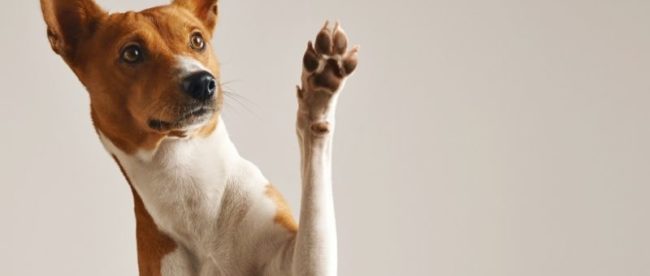
While some dogs may be taught to use their paws more for specific reasons, all dogs use their paws to interact. Whether to allow them to play, display obedience or dominance, and more. Even though some dog breeds use their paws a lot for particular purposes, most of these unusual traits are instincts and rigorous training.
Like people, all dogs, regardless of breed, have their own distinct personalities. Just as one dog of a specific breed that is inclined to use its paws loves doing so, not all dogs of that breed will be the same.
Do you have a specific question about dog breeds that use their paws a lot? Then use the table of contents below to jump to the most relevant section. And you can always go back by clicking on the black arrow in the right bottom corner of the page. Also, please note that some of the links in this article may be affiliate links. For more details, check the Disclosure section at the bottom of the page.
Here's what we'll cover:
Dog Breeds Trained to Use Their Paws
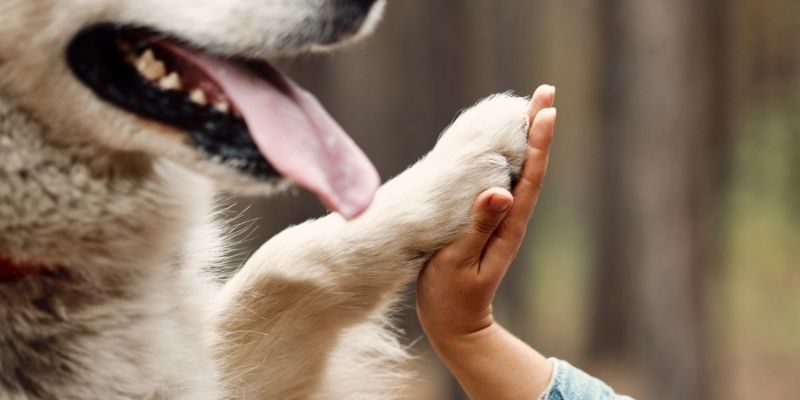
Several dog breeds learn to use their feet. These dog breeds support people with physical and emotional needs. Service dogs need their paws to be able to assist their owners to the best of their abilities.
Particular breeds are preferred for these duties. These are usually Labradors, German Shepherds, Golden Retrievers, and Poodles (although not as often as the others). They teach them to support people with disabilities and use their paws to switch on and off lights to balance when their owner wants to shift from a wheelchair to a bed and vice versa.
It’s also possible to train dogs to look after people with severe diabetes. You can teach the dog to alert the human when there’s a blood sugar problem. It’s amazing! How do they let their owners know, though? Through the use of their paws.

Dog Breeds That Use Their Paws a Lot Naturally
German Shepherd
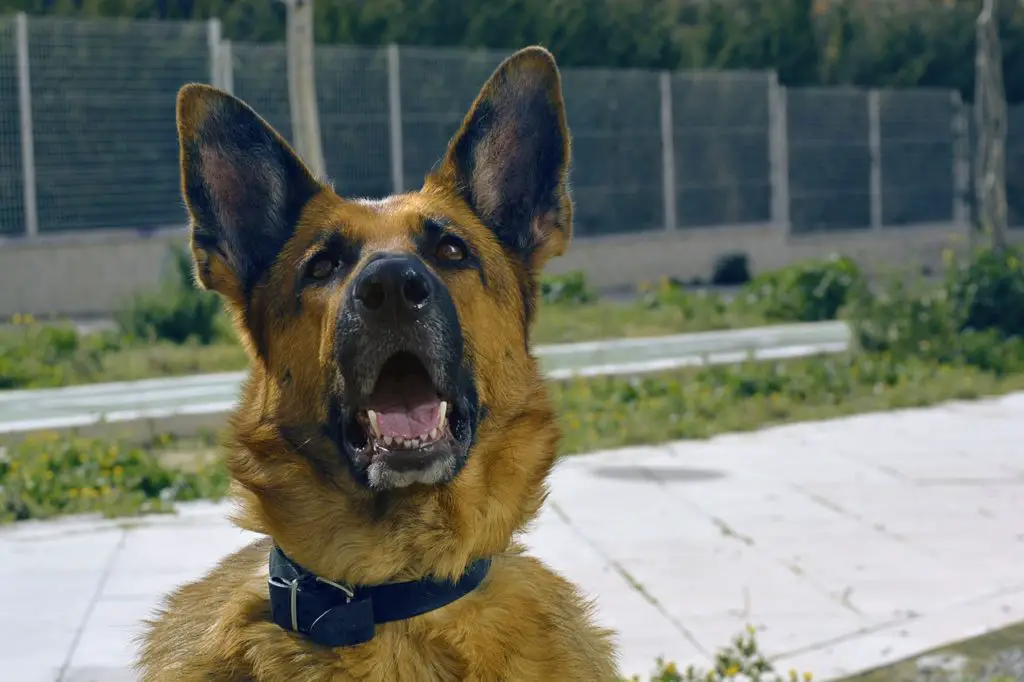
Famous for their excellent service to the police and military, the German Shepherd is a devoted working dog. Its sense of smell and level of intellect is unmatched.
Besides detecting explosives and drugs, a GSD makes a great therapy dog. These activities include the heavy use of all parts of its body, including the dog’s front paws.
This breed has an adventurous disposition. It is always trying to explore its surroundings and learn new things. Often this results in how the dog uses paws like hands. It uses them to touch things, find new toys, catch a Frisbee, etc.
Boxers
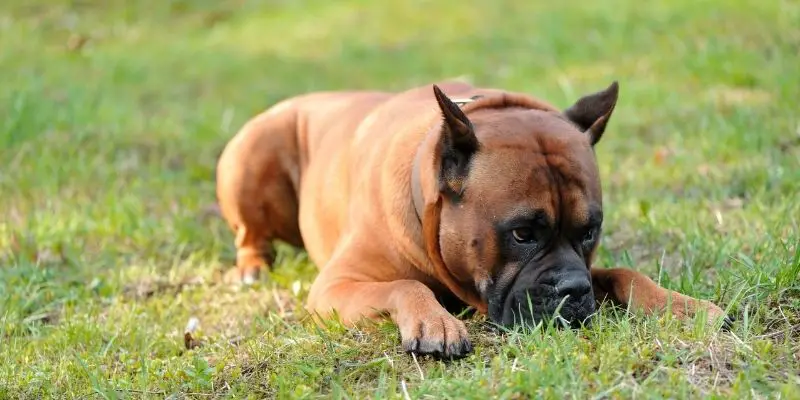
Indeed, there is an explanation why these dogs are called boxers! They’re energetic, bright, and very playful dogs. They are also considered to be too muscular and strong canines who are very good with children.
They also seem to tend to stand on their hind legs and play on their front paws, similar to the sport of boxing.
In general, boxers just “box” with other dogs and do so in a polite way, not aggressively. People don’t need to be afraid of this dog’s front paws.
Owners who have boxers will need to consider a large backyard to give these enthusiastic companions enough room to run freely and “box” with their paws!
American Bulldog
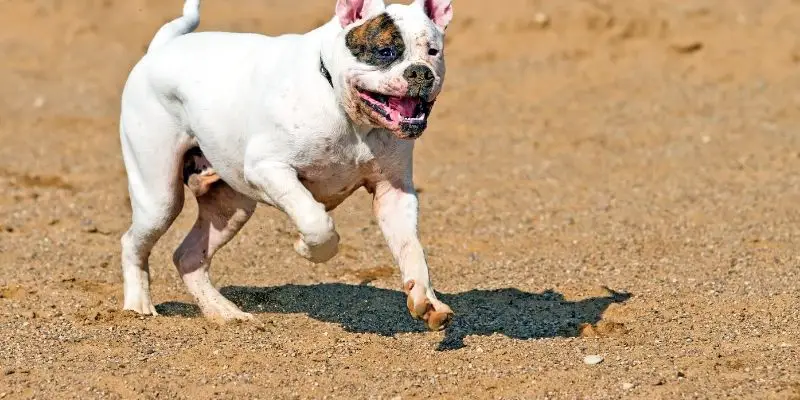
The American Bulldog needs more attention from its owner because it can get lonely if left alone. Like humans, these pups use their paws to interact with their loved ones.
Engaging in destructive behavior is the first sign that your dog is getting bored. Therefore, make sure your pet is still having fun to minimize the risk of negative behavior.
English Setter
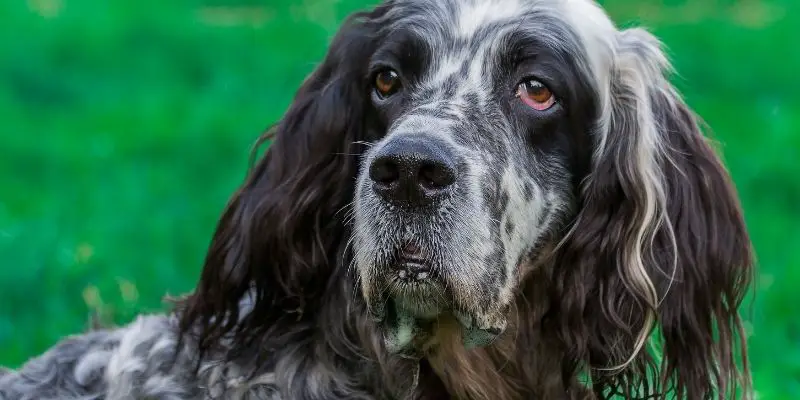
Like the English Pointer, the English Setter is another pointer who uses a bit too much of his hands. This dog’s front paws were so used to pointing at prey that they can’t sit without operating for too long. When you leave one with chew toys, don’t be surprised if it grabs them in its paws while it chews away.
Rather than using barking and other sounds to communicate with other animals (like other common dogs), they are more likely to pet them with their paws. Of course, not all English Setters show this trait. But if you do or do not see it, don’t get too alarmed about it.
Labrador Retriever
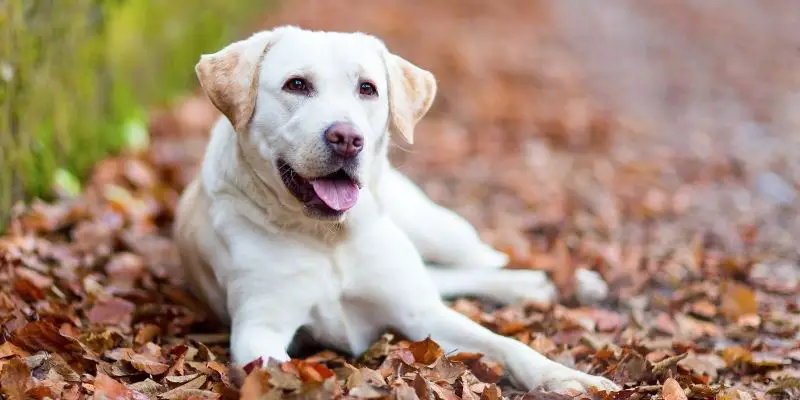
The Labrador Retriever is an all-around breed. If you want it to enjoy being spoiled at home, it’s going to do it happily. If it finds itself needed in the service dog world, it will leap with joy at the opportunity with its whole heart.
Labrador Retrievers make an outstanding search and rescue dog (SAR), mainly in the identification field. One of the most famous SAR dogs was a Labrador Retriever named Jake! As a service animal, this dog will inevitably use its front paws when performing its duties.
At home, you’re going to see that this dog uses paws like hands. It may start grabbing things for you by using its paws, sending you a “high five,” pawing at you, petting your shoulders, you name it.
Golden Retriever
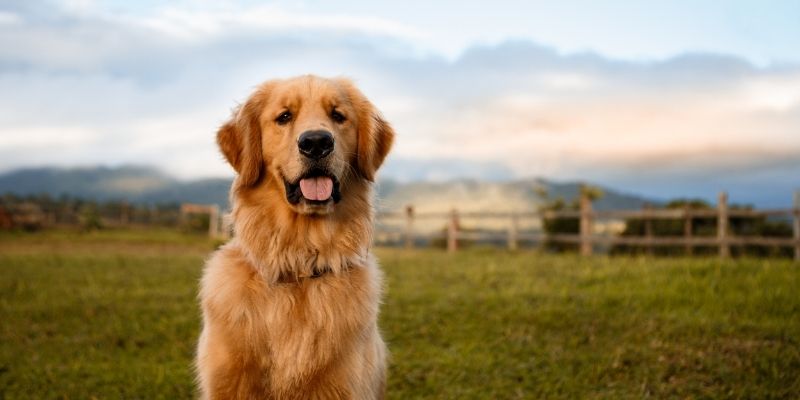
This breed is so common that it is easy to identify by even non-dog people. Golden Retrievers are very loyal to their owners and can be a perfect companion to young children.
They are also very skilled in dog sports because of their muscular and agile body. Golden Retrievers are especially interested in water sports, such as dock diving, as they love to play in the water.
Because of their fantastic water abilities, they can also help you fish (transporting nets and fetching ropes). They can even catch fish for their owners (and themselves) by using their paws as their hands.
Beagle
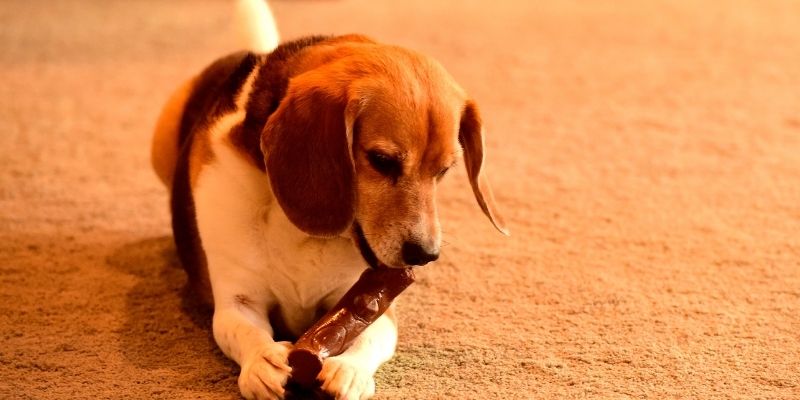
As a hunting powerhouse, the Beagle uses its hands to catch its prey of choice. Of course, the nose and the mouth do a lot of the job, but its paws are seldom free.
At home, this dog’s front paws will work just like a human being’s hands would do. For instance, you’ll notice them catching a ball with their paws instead of their mouth. They also wipe their face by rubbing their tiny feet all over them.
Siberian Husky
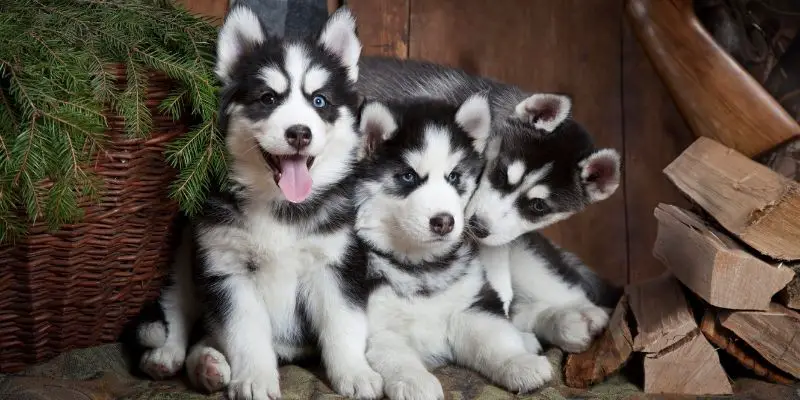
Huskies are beautiful dog breeds with a lot of affection for the entire family.
While it was once a fantastic sled dog, it has changed since then due to the pets’ domestication. It is a fun, soft, and trustworthy snuggle buddy now. They also like to work whenever they have to, which is mostly hunting. This requires them to make the most use of their front paws.
This breed likes to use its paws to do other things, such as pawing at you, crossing its arms in a prayerful pose, kicking the ball with its front paws, and more.
English Pointer
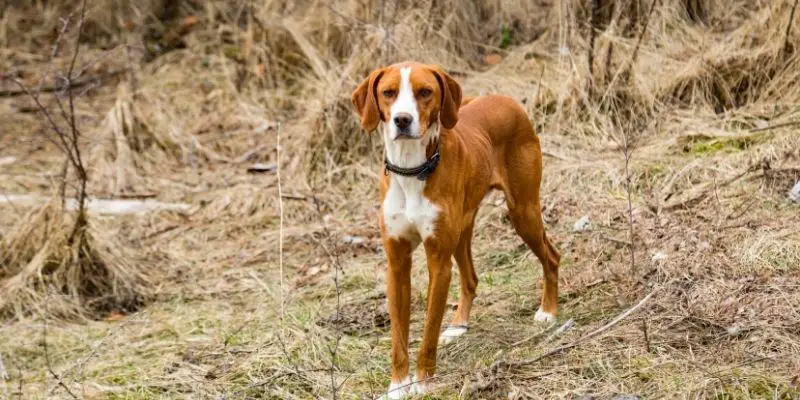
Pointers often engage their paws rather more than other breeds do to carry out their duties. Most of these dogs were bred to hunt birds. They’d point to the prey with their paws.
The English Pointer is a perfect companion for a hunting maniac. He can track the prey, point it, and retrieve it. Throughout all three levels, the paws will be used as much as possible.
Since there is very little hunting going on in a household, this breed appears to point to various home items. Often, he’s going to paw you to seek your love, pet other animals for some reason, or just use his paws to show you some sort of affection.
Shiba Inu
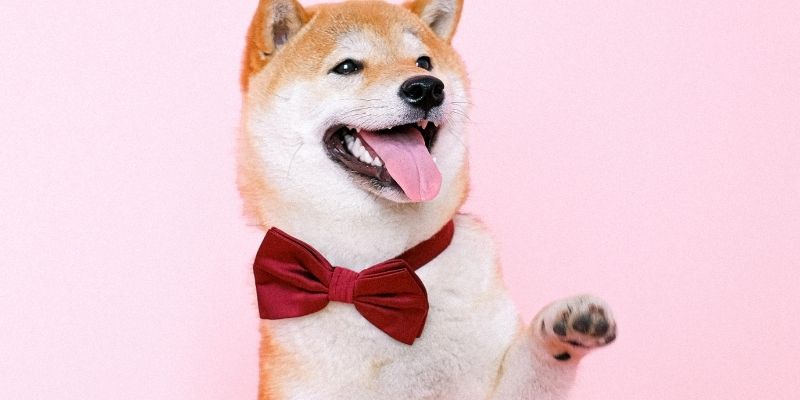
The Shiba Inu is a lovely, thick-coated dog with cat-like facial features. Apparently, not only does it look like a cat, but it also behaves like a cat. This is simply because a Shiba Inu tends to use its claws much more than other dogs do. And almost as much as a cat.
If you’re cuddling and nibbling something it loves, trust it to snatch your arm with one hand and steal your food with the other. Stuff like opening doors, clicks, carrying chew toys are done with paws, too. Many people are amazed at how often a Shiba Inu will use its paws to interact with things around them!
Credits: thanks for the cover photo to Canva.

Disclosure: At pawtypooch.com we only mention the products that we’ve researched and considered worthy. But it’s important to note that we are a participant of several affiliate programs, including VigLink, ShareASale, Skimlinks, and Amazon Services LLC Associates Program, an affiliate advertising program designed to provide a mean for us to earn fees by linking to Amazon.com and affiliated sites. As an Amazon Associate pawtypooch.com earns from qualifying purchases. Also, please note that pawtypooch.com does not intend to provide veterinary advice. All published articles are meant for informational purposes only. And this information should not be substituted for professional veterinary consultation.

